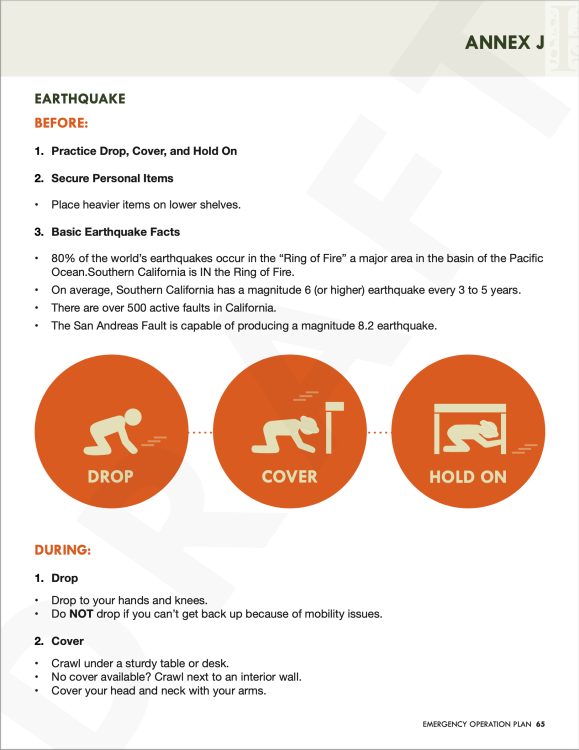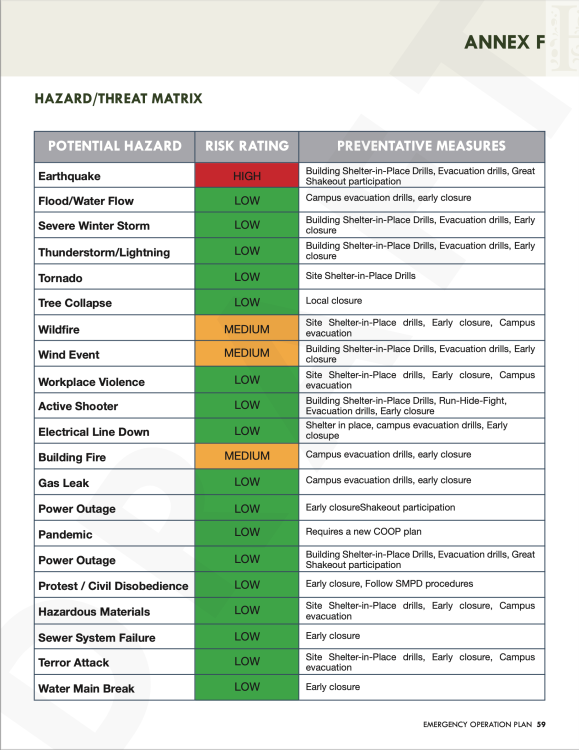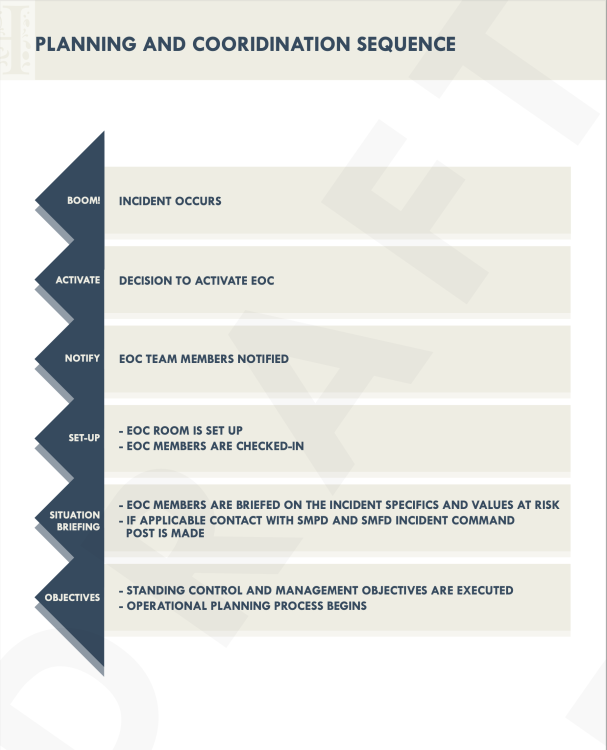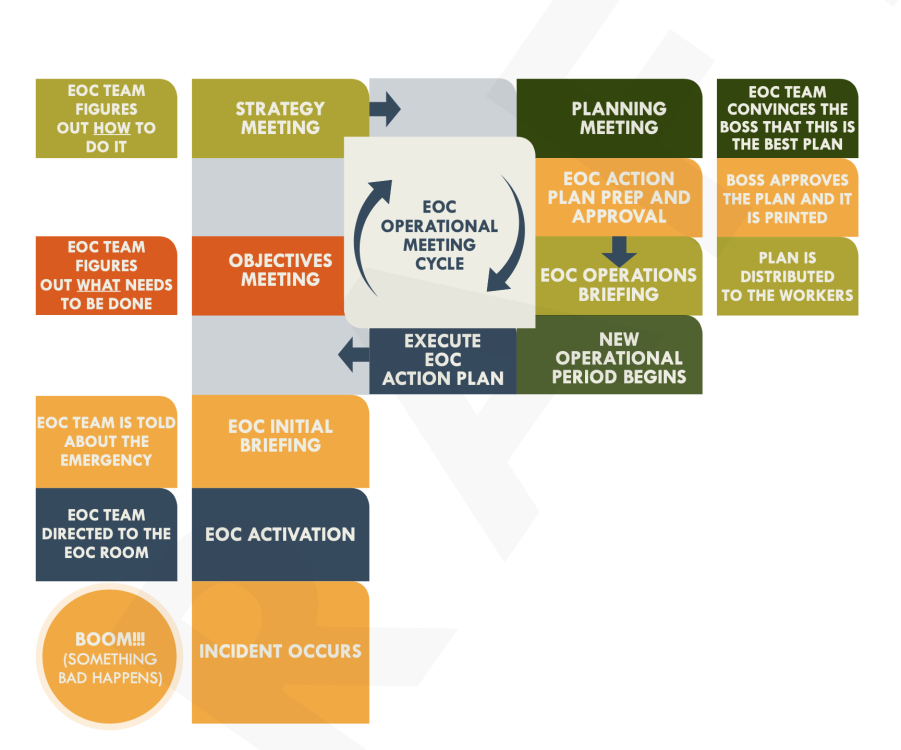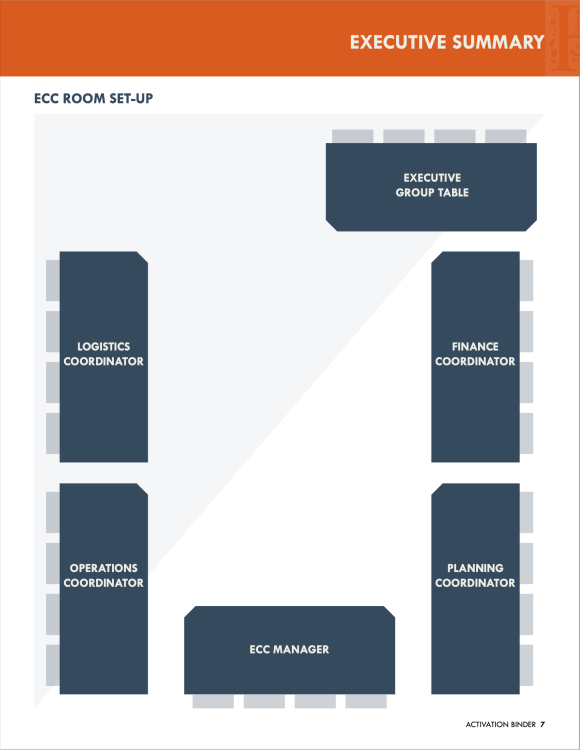Every Organization Needs a Plan.
Emergency Operations Plans
We develop quality emergency response and operations center plans.
One of the cornerstones of public safety is having a plan in the event of a disaster. If your organization has a growing employee roster, or if you accommodate more than 500 visitors a year, you should consider an emergency response plan. The Safe Community Project has the right expertise, a proper understanding of scalability for responding to emergencies, and the team to build even complex plans for museums, public access spaces, and large organizations.
Emergency Operations Plans FAQs.
An emergency plan is a written set of instructions that defines what workers and others at the workplace should do in the event of a disaster or local emergency.
An emergency action plan (EAP) is a written document required by particular OSHA standards. [29 CFR 1910.38(a)] The purpose of an EAP is to facilitate and organize employer and employee actions during workplace emergencies.
- Assess the needs of the organization
- Create a set of written policies
- Develop levels of response, based on need and function
- Training – CPR, BLS First Aid, Evacuation, Active Shooter, etc.
- Audit the plan on an annual basis and update as required
Effective communication is the most vital component of any emergency response. Streamlined, efficient communication can help mitigate loss of life and keep responders safe. Make sure you have a tested communication plan and system in place.
- Assign priority and responsibilities
- Evaluate your facility’s challenges and hazards
- Delineate steps for avoidance and prevention
- Plan for actions during and after a disaster
- Practice your procedures
- Make regular reviews
The threats will vary, depending on the scope and type of organization. However, when looking at the main threats generically, these might include structure fire, wildfire, explosion, medical emergency, rescues, incidents with hazardous chemicals, bomb threats, active shooter, and natural disasters.
In the context of emergency planning a definition of a major emergency is any event (happening with or without warning) causing or threatening death or injury, damage to property or the environment or disruption to the community which, because of the scale of its effects, cannot be dealt with by the emergency services
The Safe Community Project does not reinvent the wheel – however, our experts will learn about your organization, the threats that could impact you, your employees visitors and the surrounding community, and will then apply national standards to a process that is both easily understood by your leadership and staff – and by local first responders. We comply with FEMA’s Comprehensive Preparedness Guide.
The cost of developing a plan varies based on each individual organization’s needs and existing plans. Is there a plan at all? Can it be updated? If no plan, why not? Plans often start in the mid five figures, but can extend to six figures or more, depending on the needs, complexity, and timing required to develop.
NEED HELP WITH YOUR PLAN?
Elevate Your Plans From Good to Great.
Connect with us and we’ll discuss the best path forward for your planning needs. Our consultations are always free.

